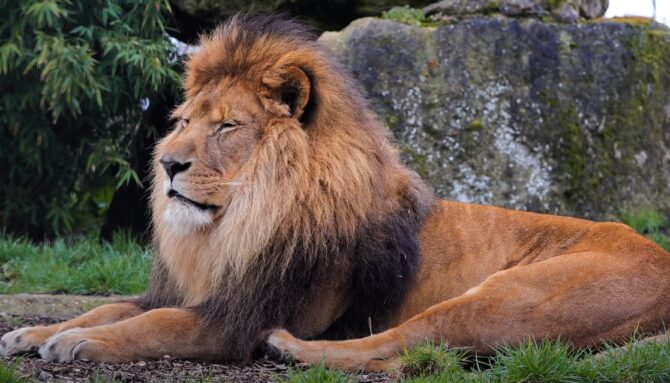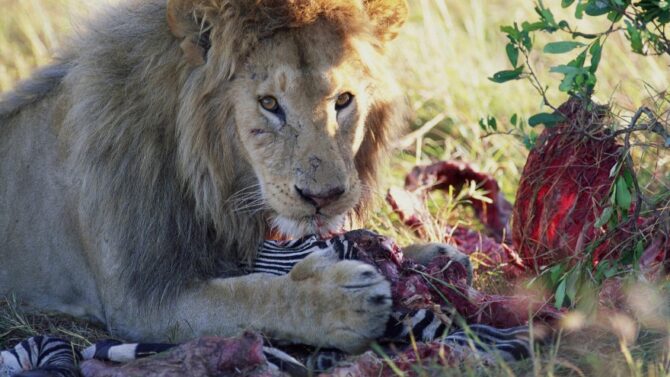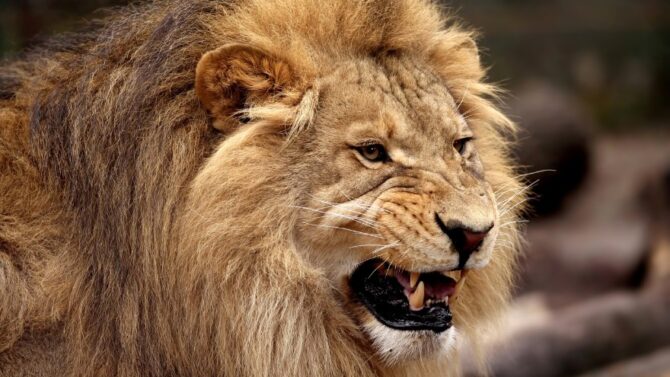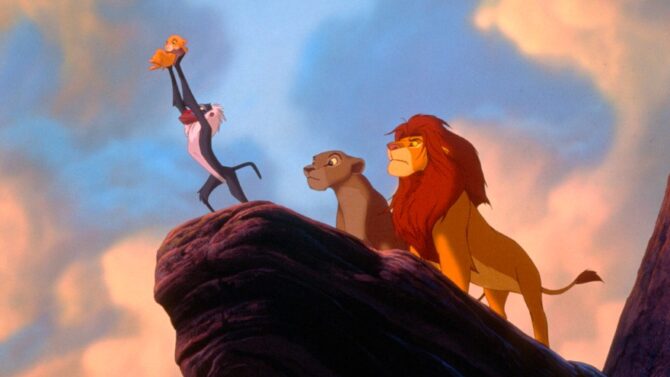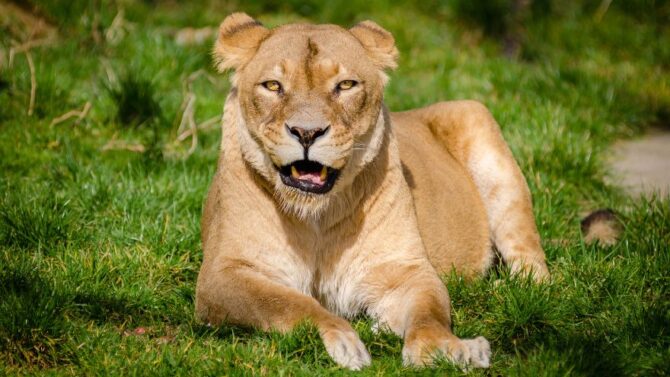Hey there! Ever wonder about lions, those awesome “kings of the jungle”? They’re not just cool characters from a movie; they’re real, big, and fascinating members of the cat family. Lions have been wowing humans for thousands of years. In this article, we’re going to dive into the world of lions, checking out the different types you might find lounging in Africa or padding around India. We’ll explore what makes each one special, where they hang out, and the hurdles they face in the wild.
Lion Taxonomy
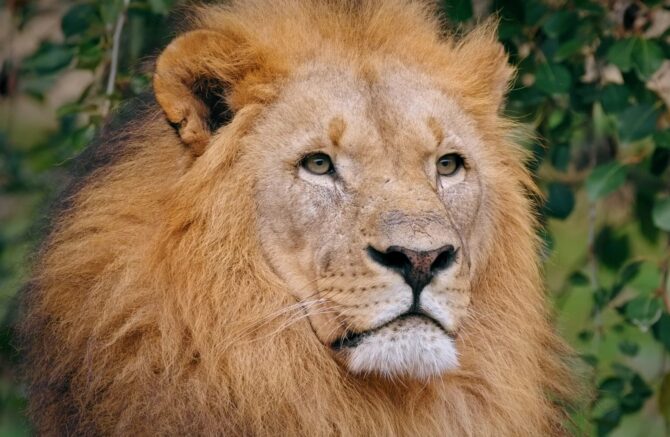
Lions, often referred to as the “king of the jungle,” are majestic animals that have captured human fascination for millennia. The lion (Panthera leo) is one of the largest members of the cat family Felidae and is perhaps one of the most iconic animals on the planet.
Lions are part of the genus Panthera, which also includes tigers, leopards, and jaguars. They are mammals and vertebrates, meaning they have a spine. The species is divided into two primary subspecies: the African lion (Panthera leo leo) and the Asiatic lion (Panthera leo persica). However, within these broad categories, there are several types and extinct subspecies that have been recognized by various taxonomic authorities over time.
Lions are fascinating creatures not just for their majestic appearance and societal significance, but also for their intriguing taxonomic classification. As members of the genus Panthera, lions share a lineage with some of the most formidable predators on Earth. Their classification, evolution, and distinction from other big cats are subjects of interest for conservationists, scientists, and animal enthusiasts alike. Here’s an expanded view of lion taxonomy, along with a table for clearer understanding.
Genus Panthera Overview
The genus Panthera is a member of the Felidae family and includes the most recognized and formidable big cats: lions, tigers, leopards, and jaguars. These animals are known for their power, stealth, and a unique anatomical feature that allows them to roar. The genus is defined by specific structural features in the larynx, as well as other genetic markers.
| Species | Scientific Name | Common Name |
|---|---|---|
| Lion | Panthera leo | Lion |
| Tiger | Panthera tigris | Tiger |
| Leopard | Panthera pardus | Leopard |
| Jaguar | Panthera onca | Jaguar |
Classification and Subspecies of Lions
Lions are classified under the species Panthera leo. Within this species, there are two recognized primary subspecies: the African lion and the Asiatic lion. While these two are the most widely recognized, historical and genetic research has pointed to the existence of other subspecies, many of which are now extinct.
- African Lion (Panthera leo leo): The African lion is the most common type of lion, with populations spread throughout sub-Saharan Africa. They are known for their impressive manes and are larger in size compared to their Asian counterparts.
- Asiatic Lion (Panthera leo persica): The Asiatic lion is found primarily in the Gir Forest of India. They are smaller and have a less pronounced mane compared to the African lions. The Asiatic lion is critically endangered, with efforts ongoing to preserve its population.
Historically, several other subspecies were recognized, though many have become extinct or have been reclassified based on genetic studies. These include the Barbary lion, West African lion, Northeast Congo lion, and more.
Table of Lion Subspecies and Characteristics
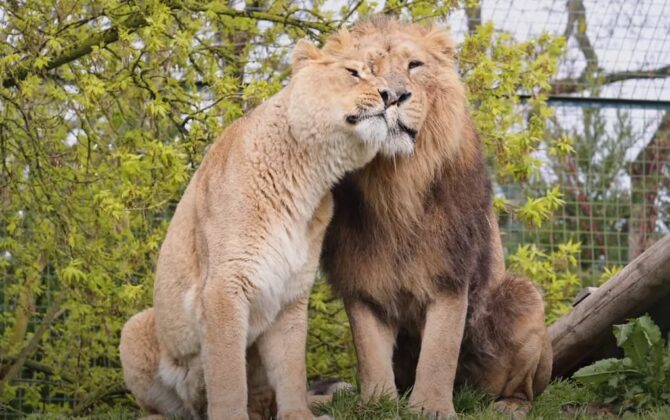
Here’s a table outlining the primary subspecies of lions and some of their key characteristics:
| Subspecies | Distribution | Characteristics |
|---|---|---|
| African Lion (P. l. leo) | Sub-Saharan Africa | Larger body, prominent mane in males, varies in size and color based on the region. Live in prides and are apex predators. |
| Asiatic Lion (P. l. persica) | Gir Forest, India | Smaller size, less pronounced mane, a more tufted tail. Live in smaller prides or even as solitary individuals due to reduced habitat. |
Evolution and Genetic Studies
Lion taxonomy is not just about classification but also about understanding the evolutionary history and relationships between different populations. Genetic studies have been crucial in revealing the lineage and divergence of various lion populations. These studies help in understanding how different subspecies have adapted to their respective environments and the genetic health of current populations. They are also fundamental in informing conservation strategies, ensuring that efforts are genetically informed and effective in preserving the diversity and health of lion populations.
The African Lion
The African lion is the more widespread of the two primary subspecies and inhabits a range of African habitats, from grasslands to open woodlands. These lions are what most people picture when they think of a lion: a large, tawny-colored cat with a thick mane (in males) and a mighty roar. The African lion is further divided into several types based on region and physical characteristics, including the East African lion, Transvaal lion, Katanga lion, and the West African lion. Each of these has adaptations suited to their specific environments.
The Asiatic Lion
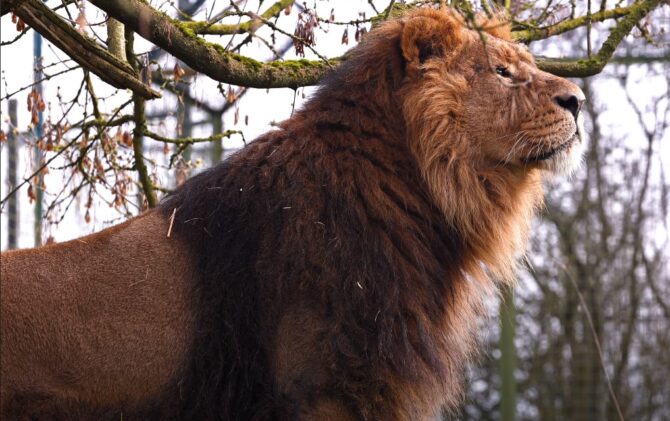
The Asiatic lion, once widespread from Turkey across to India, is now found only in a single, isolated population in the Gir Forest of India. Smaller and with a less pronounced mane than their African cousins, Asiatic lions have adapted to their forested habitat. They are a conservation success story, having been brought back from the brink of extinction, but they still face numerous challenges from human encroachment and habitat loss.
Barbary and Other Extinct Lions
History speaks of lions that once roamed outside the current populations’ ranges. The Barbary lion, considered one of the largest lion subspecies, once lived across North Africa but was driven to extinction in the wild in the early 20th century. Similarly, the Cape lion was another subspecies that lived in South Africa’s Cape region and is now extinct. Their legacies remind us of the biodiversity that has been lost and the importance of conservation.
Characteristics and Behaviors
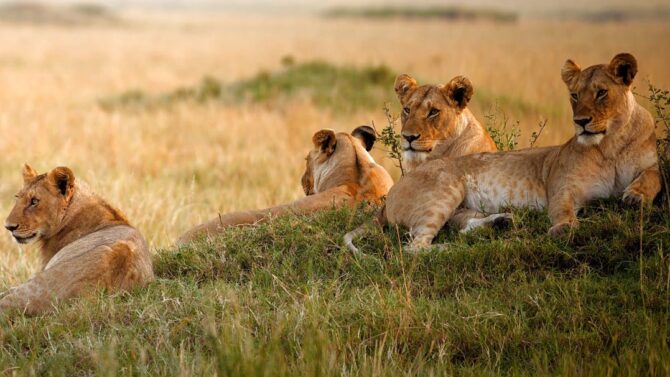
Lions are known for their distinct social structure, forming groups called prides. These prides are typically made up of related females, their offspring, and a small number of adult males. Lions are apex predators, playing a critical role in their ecosystems by controlling herbivore populations. Their behaviors, hunting techniques, and group dynamics vary slightly among different types of lions, influenced by their specific habitats and prey availability.
Conservation Status
Lions are currently listed as vulnerable on the International Union for Conservation of Nature (IUCN) Red List, with some populations being considered critically endangered. Threats to lions include habitat loss, human-wildlife conflict, and reduced prey availability. Conservation efforts are critical to ensuring the future of these magnificent beasts, and they involve habitat restoration, conflict mitigation, and combating illegal wildlife trade.
Lion Conservation Strategies
| Category | Description |
|---|---|
| Understanding Lion Taxonomy | Lions belong to the genus Panthera, divided primarily into African lions (Panthera leo leo) and Asiatic lions (Panthera leo persica). Further divided into several types based on region and physical characteristics. |
| The African Lion | Widespread subspecies living in varied African habitats. Known for their large size and majestic manes. Further divided into several regional types like the East African lion, Transvaal lion, Katanga lion, and West African lion. |
| The Asiatic Lion | Once widespread, now only found in Gir Forest, India. Smaller and less pronounced mane compared to African lions. Adapted to forested habitat and considered a conservation success story. |
| Barbary and Other Extinct Lions | Includes the Barbary lion of North Africa and the Cape lion of South Africa’s Cape region, both extinct due to human activities. Highlight the loss of biodiversity and the importance of conservation. |
| Characteristics and Behaviors | Lions are social creatures forming prides. Apex predators with variations in hunting techniques and social structure across types. Males typically have a mane. Known for their roar and majestic presence. |
| Conservation Status | Classified as vulnerable with some populations critically endangered due to habitat loss, human conflict, and reduced prey availability. International efforts are ongoing for their conservation. |
| Cultural Significance | Lions hold deep cultural significance across the world as symbols of strength, courage, and royalty. Featured prominently in art, literature, and emblems. |
| Conservation Strategies | Includes habitat preservation, human-wildlife conflict mitigation, anti-poaching measures, education, and community involvement. Scientific research plays a critical role in understanding lion needs and conservation efficacy. |
| Role of Science and Research | Essential for understanding lion genetics, behavior, and ecology. Methods include satellite tracking, camera traps, and field observations. Vital for monitoring populations and conservation strategies. |
| Global and Local Initiatives | Protected under CITES with various international organizations supporting conservation. Local governments and NGOs implement tailored strategies. |
| Future of Lions | Depends on the success of conservation efforts and human coexistence. Planning for climate change impacts and human demographic changes is crucial. Every conserved lion contributes to broader biodiversity and ecosystem health. |
| Conclusion | Lions are a symbol of natural beauty and strength. Understanding and protecting different types of lions is crucial for preserving biodiversity and natural heritage. Commitment to conservation ensures lions continue to thrive in the wild, maintaining the health and balance of ecosystems they inhabit. |
FAQs
Can lions from different regions interbreed and produce viable offspring?
Yes, lions from different regions can interbreed and produce viable offspring, as they are the same species. However, this is rare in the wild due to geographic and behavioral barriers. In captivity, such breeding can occur, but it’s generally discouraged to maintain genetic diversity and distinct subspecies characteristics.
How do lions communicate with each other?
Lions communicate through a variety of vocalizations, body language, and scent marking. They roar to assert territory and communicate status, growl in aggression, and use softer sounds for close-range communication. Purring, head rubbing, and licking are also common forms of communication within a pride.
Are there any diseases that are specific to lions or particularly threatening to their populations?
Lions face several health threats, including bovine tuberculosis, feline immunodeficiency virus (FIV), and canine distemper virus (CDV). These diseases can have significant impacts on lion populations, especially when combined with other stresses like habitat loss or reduced prey availability.
How does climate change affect lion populations?
Climate change can significantly impact lion populations by altering their habitats, affecting prey availability, and exacerbating human-wildlife conflicts. Changes in temperature and precipitation patterns can lead to habitat degradation or shifts, forcing lions to adapt or move into areas with higher human populations, leading to increased conflicts.
What is the genetic difference between the African and Asiatic lion?
The African and Asiatic lions are subspecies, meaning they have some genetic differences that have developed due to geographical separation and distinct environmental pressures. These differences include variations in mane size and color, skull shape, and genetic markers. Despite these differences, they are closely related and share much of their genetic makeup.
How do conservation efforts for lions benefit other wildlife and the environment?
Lion conservation efforts often benefit a wide range of other species and the environment. As apex predators, lions help maintain healthy populations of herbivores, which in turn helps regulate vegetation and maintain balanced ecosystems. Protecting lion habitats also conserves the vast biodiversity of these areas, including other animals, plants, and entire ecological processes. Furthermore, conservation initiatives often involve community engagement, leading to more sustainable land and wildlife management practices.
Final Words
That’s a wrap on the king of the jungle! Lions, with their iconic manes and deep roars, are more than just symbols of strength; they’re key players in their ecosystems. From the vast African plains to the Gir forests, each lion type has its tale of survival. Remember, protecting lions is about more than just saving a famous animal; it’s about keeping our ecosystems healthy and diverse. So let’s keep their roars alive for the generations to come by supporting conservation efforts. Here’s to the lions, may they continue to reign and inspire!
